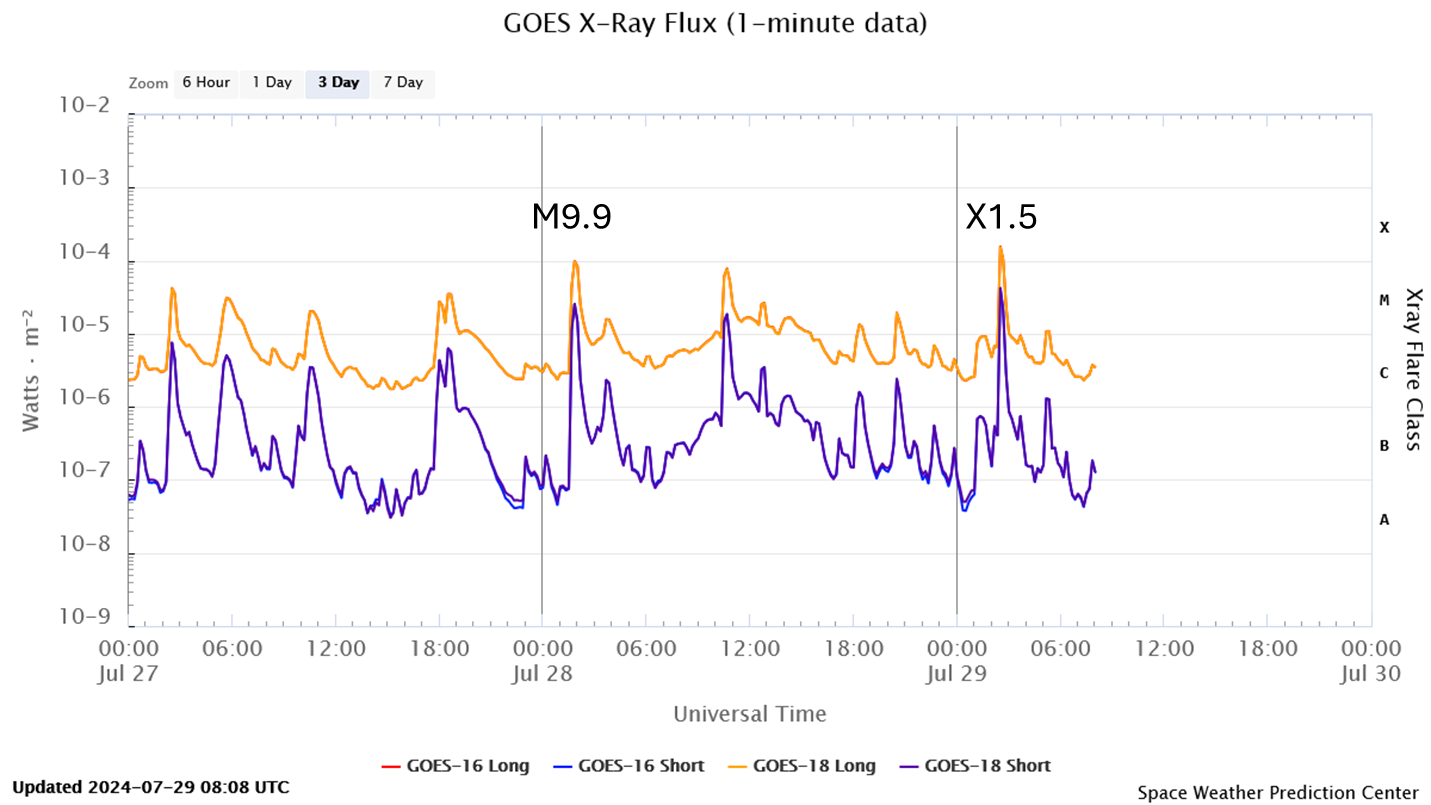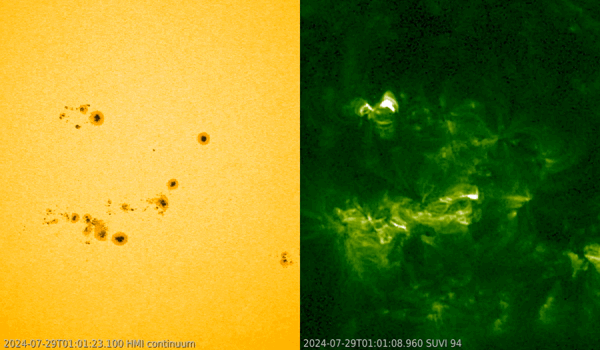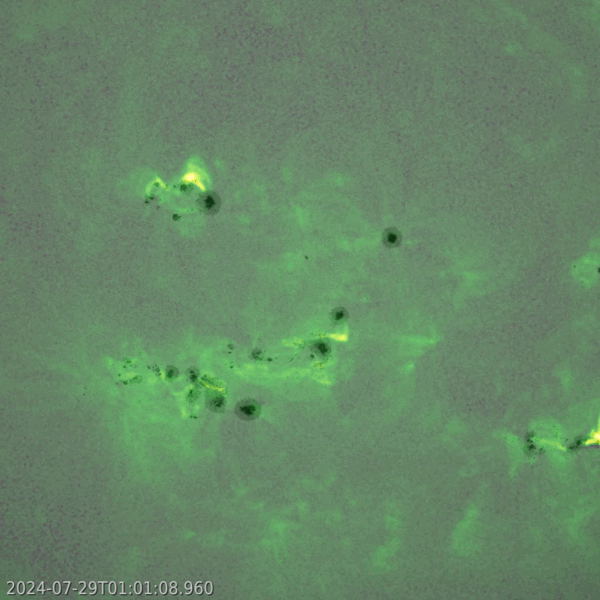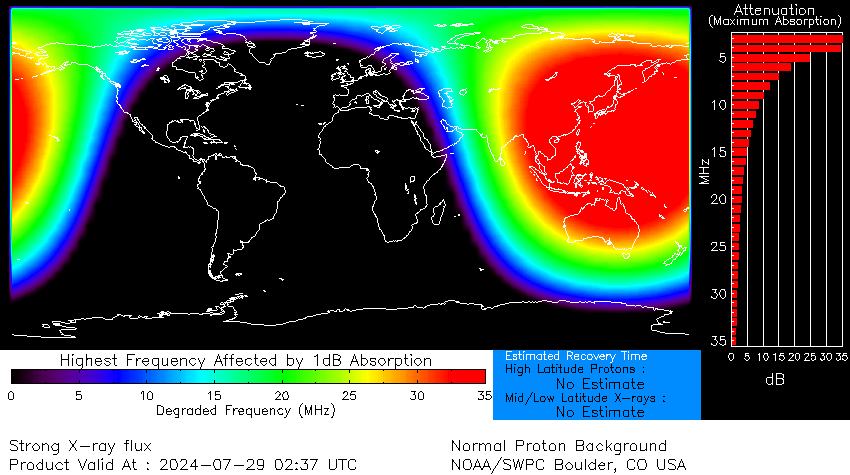An X1.5 flare was observed early on 29 July. Peaking at 02:37UTC, it was located on the borderline between the main spots of NOAA 3766 and 3764, both members of a sunspot group cluster consisting of 5 regions (annotated image with NOAA active region numbers). These two active regions have been closing in to each other during the last 48 hours, and may merge over the next few days. NOAA 3766 has also developed a small magnetic delta structure in the northern portion of its main spot. So, it's not such a surprise that the location of the X1 flare was similar to that of an M9.9 flare that took place a day earlier, on 28 July at 01:57UTC (comparison - with SDO EUV image overlaid on white light). That flare was accompanied by a strong radio burst at 245 MHz (230.000 sfu), as well as a Tenflare (doubling or more of the background radio flux at 2.8 GHz) and a Type II radio burst. The associated coronal mass ejection (CME) was thought to have an earth-directed component and arrive on 31 July (SIDC forecaster). The radio emission associated with the X1 flare was less "loud" (nearly 100 times weaker at 245 MHz ; comparison NICT/Yamagawa), but also showed a Tenflare and a Type II radio burst. So far however, no CME associated with this X1 eruption has been observed. The graph underneath shows the evolution of the soft-x-ray flux (GOES) followed by a clip of the X1 flare with SDO white light image combined with GOES/SUVI 094 extreme ultraviolet (EUV) imagery , once in multiview and once overlaid onto each other. Further M- and X-class flares from this active region cluster can be expected during the coming days.



Space weather effects from both flares were limited to some minor disturbances of HF Com on the Earth's dayside (DRAP ; map underneath). As both flares took place at around the same UTC time, basically the same areas of the Earth were affected: Japan, China, southeast Asia, Australia and the West-Pacific. Several magnetic observatories in these areas (Intermagnet (BGS)) reported a solar flare effect (SFE), i.e. one or more components of the magnetic field strength showing a spike around the time of the flare's peak due to ionospheric enhancement by the flare's x-ray and (E)UV radiation (also known as a "magnetic crochet"). The strength of the SFE was around 10 nT for both flares, as nicely shown in the Learmonth (Australia) magnetogram underneath. For comparison, the strongest flare so far this solar cycle (X8.7 on 14 May 2024) generated an SFE of 20-30 nT.







